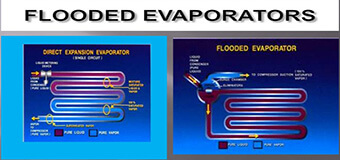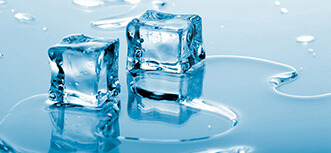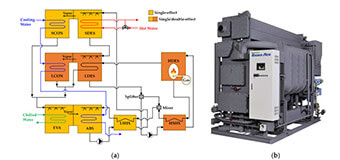Crystallization in absorption chillers and how to prevent it
Crystallization of lithium bromide in absorption chillers in early models has caused problems in their operation. In the early years of the production of absorption chillers, the famous manufacturers of the world have acted in different ways to solve this problem. In this article, one of the most common methods used by most manufacturers will be explained.
In any case, currently most of the absorption chiller manufacturers have solved the crystal problem and there is no need to worry about the use of lithium bromide absorption chillers in refrigeration systems, and even recently, certain chemical additives can reduce the crystallization of lithium bromide to a large extent. decreases.
First of all, in order to better understand the problem of crystallization, maybe the state of solid vegetable oil is a good example. Nestlé solid oil is a liquid at a certain temperature, but changes to a solid state due to the lowering of the temperature. Lithium bromide solution is also like this; That is, at a certain concentration and temperature, it changes its state and changes into a crystal, which causes a disturbance in the circulation of the solution. So the main factor of crystallization is the concentration and low temperature of lithium bromide solution. Now it will be explained how the problem happens in the absorption chiller:
The thick solution that comes out of the generator is usually passed through the heat exchanger in order to increase the efficiency of the chiller, and its heat is transferred to the dilute solution that flows in the reverse direction towards the generator. Therefore, the temperature of the thick solution leaving the exchanger is proportional to the temperature of the dilute solution leaving the absorber, due to the low load of the chiller or the excessively low temperature of the water in the cooling tower flowing in the absorber tubes, it will drop sharply when passing through the exchanger, causing the temperature of the solution to decrease. It becomes concentrated especially at the outlet of the converter to the extent that the concentrated lithium bromide solution physically changes from liquid to solid at that temperature and so-called crystallization occurs. Therefore, the only solution to fix the problem is to increase the temperature in the converter again to fix the crystal. For this purpose, a U-shaped tubular generator was installed in the outlet chamber of the generator to maintain the pressure difference between the generator tank and the evaporator in such a way that as soon as the crystal appears and the thick solution is swallowed in the generator outlet, the hot solution flows from it to the bottom of the absorber. In this way, the temperature of the solution exiting the absorber (dilute solution) whose low temperature causes the formation of crystals. increases, which causes the crystal to heat up and eventually turn into a liquid while passing through the converter (where the crystal is formed), and the path is opened again and thus the crystal is removed.
But to solve this problem fundamentally, it is necessary to identify the main cause of crystallization and take action to solve it. As mentioned, the cause of crystallization is the excessively low temperature of the water in the cooling tower. In this regard, the designers of mechanical facilities use different solutions, the most common of which is the installation of two-way or three-way control valves in the water return path of the cooling tower; Or some designers control the water outlet temperature of the cooling tower by turning on and off the cooling tower fans. Of course, some absorption chiller manufacturers have installed a thermostat on the device in order to prevent serious crystal problems, which can be used to set the lower limit of the tower water temperature so that at the critical point, the steam or hot water valve is completely closed and the chiller turns off after diluting the lithium bromide solution.
Another factor that causes crystallization in absorption chillers is the presence of leakage in the chiller and the increase in pressure inside the evaporator chamber, which increases the boiling point of the refrigerant and the water outlet temperature of the chiller, which ultimately affects the control valve and the amount More steam or hot water enters the generator, which makes the lithium bromide solution more concentrated. In order to solve this problem that the crystal does not develop acutely and extensively in the converter, usually most of the manufacturers predict and install the refrigerant overflow in the evaporator at a limit where the refrigerant directly enters the absorber and causes Concentration of lithium bromide solution
Do not increase too much. Of course, in this situation, the anti-crystal system works automatically. But the main problem of the chiller and the increase in the outlet temperature of the chiller, which is caused by the air leakage into the chiller and the increase in pressure, will still remain, and the location of the leak should be identified and resolved quickly by conventional methods, so that the absorption chiller can be operated again by creating a vacuum. . Of course, nowadays, most manufacturers of absorption chillers provide curves in which the working ranges of different parts of the chiller, the limit of crystallization, are determined in terms of concentration and temperature. Crystallization and anti-crystal will take place in the chiller.




